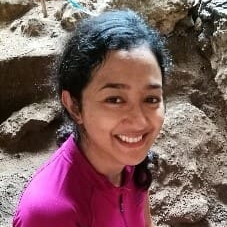Taphonomy and Palaeoecology of Quaternary Vertebrates: Advances in Fossil and Experimental Studies
A special issue of Quaternary (ISSN 2571-550X).
Deadline for manuscript submissions: closed (20 September 2021) | Viewed by 64426
Special Issue Editors
2. Archéozoologie, Archéobotanique: Sociétés, Pratiques et Environnements (AASPE, UMR 7209), Sorbonne Universités, Muséum National d\'Histoire Naturelle, CNRS, 57 Rue Cuvier, 75005 Paris, France
Interests: zooarchaeology; small mammals; palaeoenvironmental reconstructions; biogeograhical analysis; systematics and evolution; geometric morphometrics; interactions between environmental change and human activity
Interests: zooarchaeology; island biogeography; systematics; anthropogenic impacts; extinctions; palaeoenvironmental change; ecological knowledge systems
Interests: systematics; evolution; taphonomy and paleoecology of quaternary microvertebrates (North Africa, Western Europe, Middle-East); neo-taphonomic and osteological referentials
Special Issue Information
Dear Colleagues,
Taphonomic studies allow for a better understanding of the processes of formation and preservation of fossil assemblages, and the identification of biases that can alter the palaeoenvironmental interpretations deduced from faunal lists. A taphonomic analysis of a fossil assemblage is, therefore, an essential prerequisite for subsequent palaeoecological studies. Palaeoecology, in turn, uses data from fossils to examine how organisms and their environments change throughout time. By studying patterns of evolution and extinction in the context of environmental change, palaeoecologists are able to examine concepts of vulnerability and resilience in species and environments at different geographic and temporal scales. The Quaternary period is well represented in geographically extensive and high-temporal-resolution records, and is of particular interest to human evolution. Vertebrate assemblages, whether accumulated by humans or non-human agents, are frequently well preserved in Quaternary palaeontological and archaeological deposits, especially in caves. In recent years, the number of and methods for taphonomic and palaeoecological analyses on Quaternary vertebrate assemblages have greatly developed, and we would like to highlight here some works illustrating these advances by encouraging contributions from (but not restricted to) palaeontology, zooarchaeology, palaeoanthropology, palaeoclimatology, and paleoenvironmental studies. Implementation of modern taphonomic referentials and experiments are key to the adequate interpretation of fossil assemblages, so papers focusing on these topics are also welcome.
Dr. Juan Rofes
Dr. Janine Ochoa
Dr. Emmanuelle Stoetzel
Guest Editors
Manuscript Submission Information
Manuscripts should be submitted online at www.mdpi.com by registering and logging in to this website. Once you are registered, click here to go to the submission form. Manuscripts can be submitted until the deadline. All submissions that pass pre-check are peer-reviewed. Accepted papers will be published continuously in the journal (as soon as accepted) and will be listed together on the special issue website. Research articles, review articles as well as short communications are invited. For planned papers, a title and short abstract (about 100 words) can be sent to the Editorial Office for announcement on this website.
Submitted manuscripts should not have been published previously, nor be under consideration for publication elsewhere (except conference proceedings papers). All manuscripts are thoroughly refereed through a single-blind peer-review process. A guide for authors and other relevant information for submission of manuscripts is available on the Instructions for Authors page. Quaternary is an international peer-reviewed open access quarterly journal published by MDPI.
Please visit the Instructions for Authors page before submitting a manuscript. The Article Processing Charge (APC) for publication in this open access journal is 1600 CHF (Swiss Francs). Submitted papers should be well formatted and use good English. Authors may use MDPI's English editing service prior to publication or during author revisions.
Keywords
- vertebrates
- quaternary
- taphonomy
- modern referentials
- experimental studies
- palaeoecology
- palaeoenvironmental studies.







